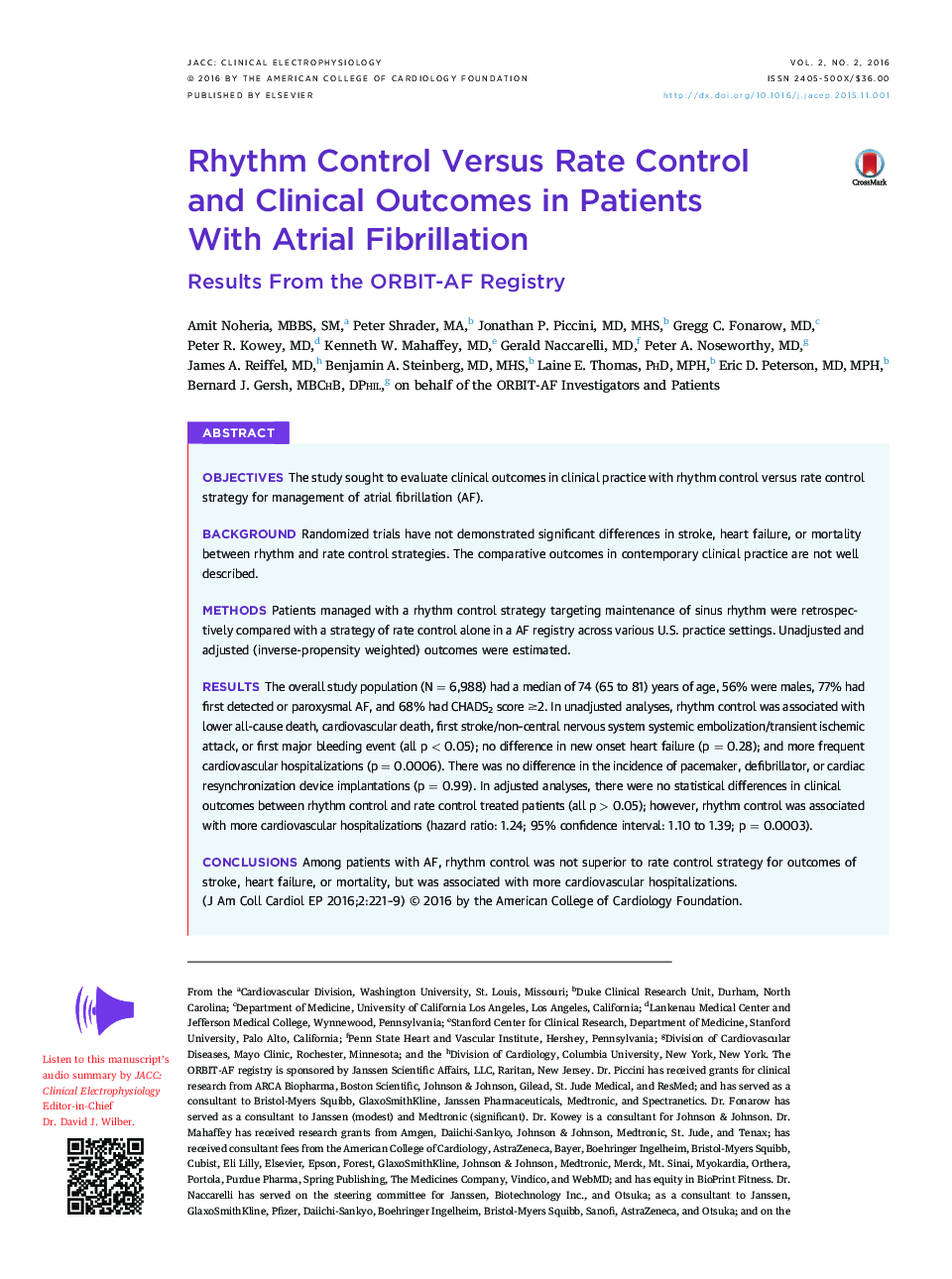| کد مقاله | کد نشریه | سال انتشار | مقاله انگلیسی | نسخه تمام متن |
|---|---|---|---|---|
| 2942183 | 1177105 | 2016 | 9 صفحه PDF | دانلود رایگان |

ObjectivesThe study sought to evaluate clinical outcomes in clinical practice with rhythm control versus rate control strategy for management of atrial fibrillation (AF).BackgroundRandomized trials have not demonstrated significant differences in stroke, heart failure, or mortality between rhythm and rate control strategies. The comparative outcomes in contemporary clinical practice are not well described.MethodsPatients managed with a rhythm control strategy targeting maintenance of sinus rhythm were retrospectively compared with a strategy of rate control alone in a AF registry across various U.S. practice settings. Unadjusted and adjusted (inverse-propensity weighted) outcomes were estimated.ResultsThe overall study population (N = 6,988) had a median of 74 (65 to 81) years of age, 56% were males, 77% had first detected or paroxysmal AF, and 68% had CHADS2 score ≥2. In unadjusted analyses, rhythm control was associated with lower all-cause death, cardiovascular death, first stroke/non–central nervous system systemic embolization/transient ischemic attack, or first major bleeding event (all p < 0.05); no difference in new onset heart failure (p = 0.28); and more frequent cardiovascular hospitalizations (p = 0.0006). There was no difference in the incidence of pacemaker, defibrillator, or cardiac resynchronization device implantations (p = 0.99). In adjusted analyses, there were no statistical differences in clinical outcomes between rhythm control and rate control treated patients (all p > 0.05); however, rhythm control was associated with more cardiovascular hospitalizations (hazard ratio: 1.24; 95% confidence interval: 1.10 to 1.39; p = 0.0003).ConclusionsAmong patients with AF, rhythm control was not superior to rate control strategy for outcomes of stroke, heart failure, or mortality, but was associated with more cardiovascular hospitalizations.
Journal: JACC: Clinical Electrophysiology - Volume 2, Issue 2, April 2016, Pages 221–229